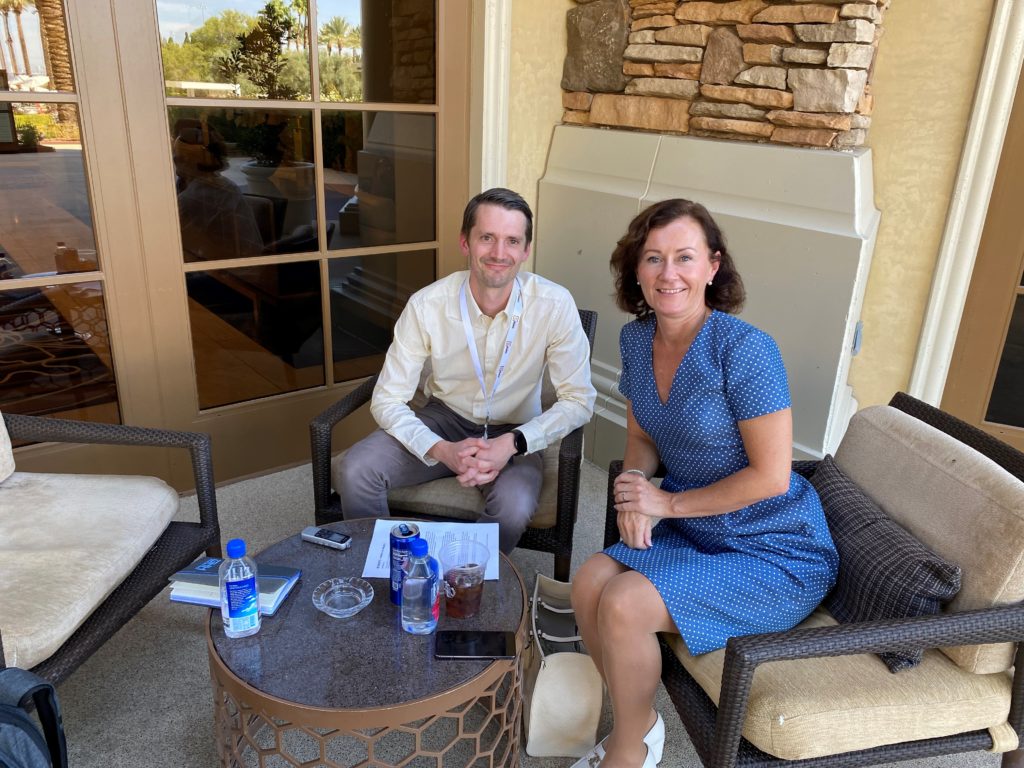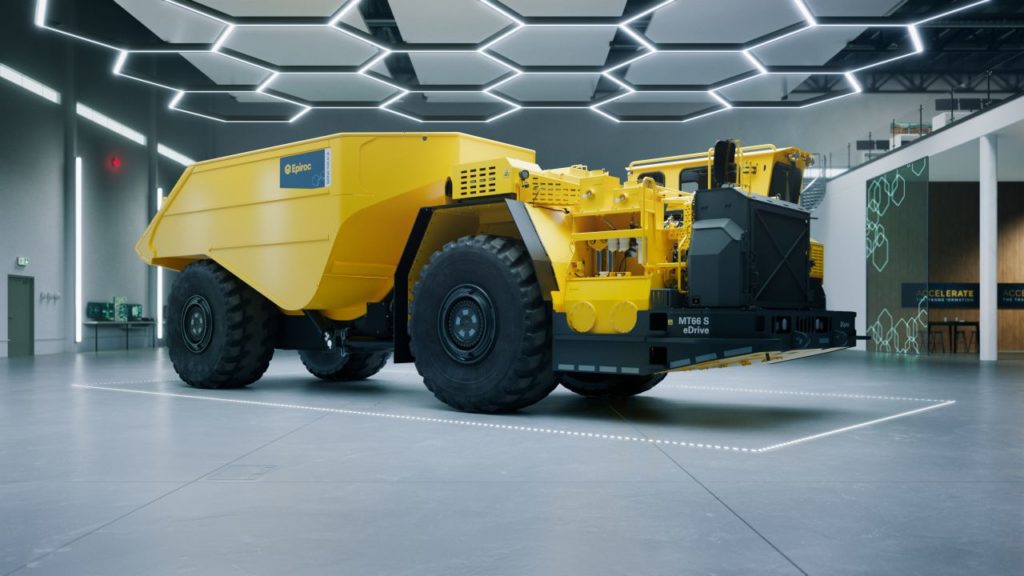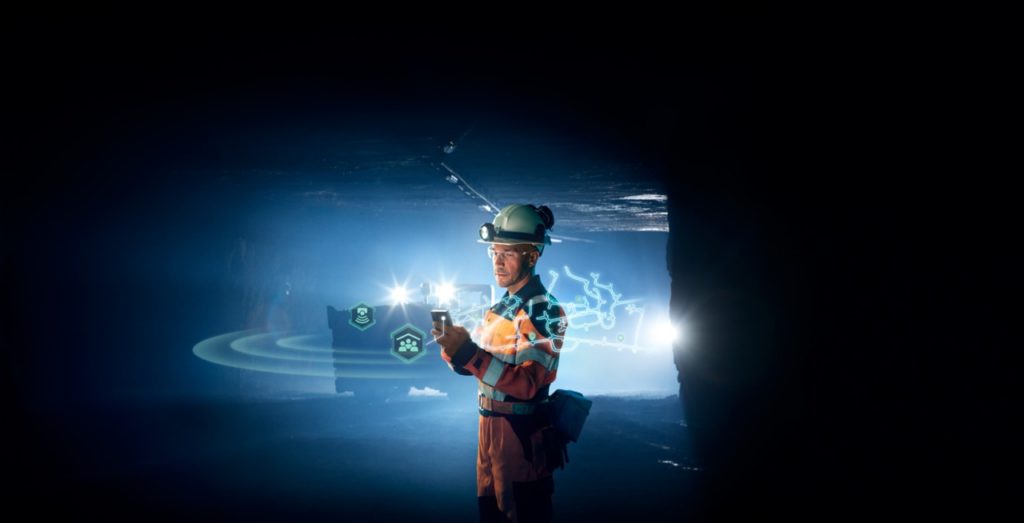Ahead of Epiroc’s Capital Markets Day (CMD) and MINExpo 2024 at a hotel just outside of Las Vegas, Helena Hedblom, Epiroc President and CEO, was happy to tackle the industry’s big three: automation, digitalisation and electrification.
Hedblom, like the heads of her fellow OEMs, has big ambitions for these three technology pillars, but the way Epiroc is looking to meet these ambitions is different.
The company’s “agnostic” philosophy has been a key differentiator for the past years, and even as more OEMs start to open up their architecture and platforms to the wider vendor marketplace, it is this attitude that is likely to help it lead from the front.
“Our ambition is to provide mixed fleet automation,” Hedblom told IM last week. “That is what we have invested in quite heavily over the last two years; we have acquired two companies in RCT and ASI Mining to allow us to achieve this.
“This is how we see the future of mining when it comes to automation, having the capabilities to operate whatever type of equipment there might be in that mine, including utility vehicles.”
Epiroc has, as of the CMD last week, 3,100 machines running without drivers. This is up 29% from the last CMD in June 2023, with the company noting that there was “great potential to connect an even larger fleet” via Epiroc machines and/or units from other OEMs.
RCT, underground, has a track record of achieving such autonomy on a wide range of machines, while, on surface, ASI Mining has proven it can do the same with the fleet at Roy Hill, in Western Australia.
Epiroc is currently converting Roy Hill’s mixed fleet to driverless operation in Australia, with 78 autonomous haul trucks made up of Caterpillar and Hitachi trucks, and over 200 utility vehicles.
Roy Hill remains the sole case study on surface, but Hedblom says the company will soon transition to the ‘scale’ of its “nail and scale” process that leads to adding more mine sites to its agnostic automation platform.
Hedblom is convinced the ability to automate the entire fleet – whether the machines are “digitally connected” or not – plus integrate the highest levels of collision avoidance solution, will go far in eradicating the need to allow autonomous and staffed equipment to operate in the same zones underground and on surface.
“If you have all the utility vehicles automated, that is the key,” she said. “It is more than just automation; through the Mernok acquisition, we’re now able to bring in Level 7, 8 and 9 collision avoidance technologies.
“Technology-wise, it is all coming together.”

Electrification
The big stats in terms of electrification include:
- 42% of the offering in “fossil free” versions;
- Battery-electric vehicles deployed at 34 sites;
- An active electric fleet of rigs, loaders and trucks totalling over 600 units (of which a large portion is historical fleet, including cable);
- Recurring battery-electric vehicle orders from 12 sites; and
- A three times increase in the utilisation rate of battery-electric vehicles during the last 12 months.
The other statistic of note is that, as it stands, Epiroc group revenues related to electrification amount to just 4%.
This indicates both Epiroc and the industry are still in the initial stages of this transition; an opinion backed up by claims from the Electric Mine Consortium that Sandvik’s battery-electric truck population across the globe represents only 15% and, as it stands, no battery-electric load and haul equipment has been sold commercially in one of the biggest underground markets: Australia.
Hedblom, here, sees parallels with the automation uptick in the industry.
“This transformation is happening in the same way that automation evolved,” she said. “A couple of years ago, we had some customers that had greenfield operations and decided to go fully electric. Now we see more customers looking at repeat orders.”
The automation analogues also come with the fact that Epiroc – unlike other OEMs – is offering a mid-life rebuild option to convert some of its existing diesel-powered load and haul fleet to battery-electric operation.
Epiroc has plans to offer this conversion option across its full existing diesel-powered load and haul fleet by 2030.
The addition of ‘fossil free’ in the Epiroc lexicon over the last few years reflects the need to put multiple options on the table for miners.
“We see that there will be different types of solutions needed during the coming 10 or 20 years, depending on mining method, type of application, etc,” Hedblom said.
This was made apparent on the floor at MINExpo where Epiroc showcased the MT66 S e Drive, a Pit Viper 271 E and a SmartROC D65 BE. The former is a diesel-electric haul truck that uses both diesel engine and electric drivetrain to reduce fuel consumption and emissions, the SmartROC D65 is a battery-electric down-the-hole drill demonstrator that trams on battery yet is plugged in for drilling, while the Pit Viper 271 E is currently envisaged as a unit connected to the site’s renewable electricity infrastructure for that ‘fossil free’ operation.

“We believe there will be a combination of different energy sources in this mix,” Hedblom said, reeling off the likes of battery-electric, cable, trolley and hybrid options. Additionally, biofuel ‘drop-in’ solutions are already available for conventionally powered machines in its offering.
She added: “Sometimes the discussion is all about benchmarking diesel against a fossil-free machine, but the reality is that every machine we are developing now cannot just be on par with its diesel counterpart. It must be better – faster up the ramp, filling the bucket faster, etc – to ensure we provide productivity benefits and a lower total cost of ownership for customers.”
Digitalisation
From an M&A perspective, digitalisation has been a key focus area for Epiroc since the Atlas Copco spinoff in 2018, with many of the 27 acquisitions since listing tied to this trend.
This, as well as many organic initiatives, has led to the company building up a revenue base for its Digital Solutions division of SEK2.4 billion ($234 million).
“Our digital solutions are agnostic, working on different types of machines and systems, so this opens up many ways to engage with our customers,” Hedblom said, noting that the platforms it had created are being used by existing Epiroc equipment customers, as well as those with fleets from other OEMs.
“The areas of high interest are around collision avoidance, situational awareness and mixed fleet automation,” she said. “I see that digitalisation creates that transparency needed to drive productivity.”
Digitalisation, itself, represents an easier ‘sell’ for Epiroc due to its seamless nature – ie not creating multiple change management issues – when compared with adopting automation and electrification technologies, Hedblom added.
Going forward, she is convinced a digital backbone will become more important with the increasing uptake of automation and electrification.
“Today, a lot of the different tools mining companies are using – for the mine plan, for maintenance, etc – are still not connected,” she explained. “You don’t use all data at the same time for the best type of decision.
“A lost hour of productivity is a lost hour of productivity; we are seeking to avoid this through increased digitalisation.”
This is where the individual solutions Epiroc has acquired through the likes of Mernok (collision avoidance), RCT and ASI Mining (agnostic automation solutions), Meglab and JTMEC (battery-electric chargers and infrastructure) could combine with its digitalisation platforms to optimise the overall mining process.
“By connecting the dots, there are many more optimisation opportunities to be had,” Hedblom said.
The difference here is that Epiroc is willing to look outside of its own four walls to the broader industrial space to ‘connect these dots’, meaning the idea of a fully-electric, fully-autonomous, fully-digitalised mine could be much closer to becoming a reality.











